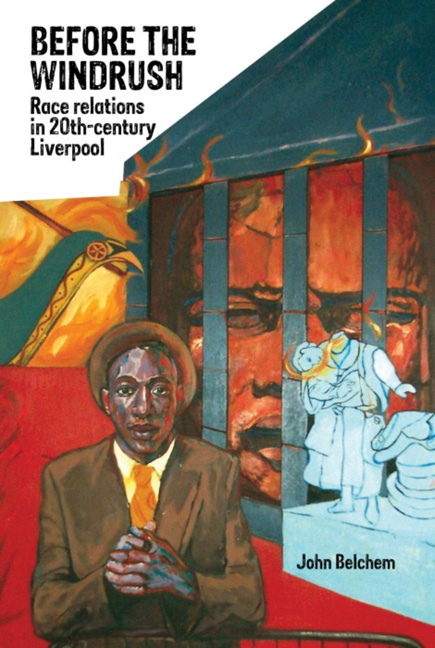Book contents
- Frontmatter
- Dedication
- Contents
- List of illustrations
- List of tables
- List of abbreviations
- Acknowledgements
- Preface
- Introduction: ‘The most disturbing case of racial disadvantage in the United Kingdom’
- Chapter One Edwardian cosmopolitanism
- Chapter Two Riot, miscegenation and inter-war depression
- Chapter Three Wartime hospitality and the colour bar
- Chapter Four Repatriation, reconstruction and post-war race relations
- Chapter Five Race relations in the 1950s
- Chapter Six 1960s: race and youth
- Chapter Seven The failure of community relations
- Chapter Eight ‘It took a riot’
- Sources consulted
- Index
Chapter Six - 1960s: race and youth
- Frontmatter
- Dedication
- Contents
- List of illustrations
- List of tables
- List of abbreviations
- Acknowledgements
- Preface
- Introduction: ‘The most disturbing case of racial disadvantage in the United Kingdom’
- Chapter One Edwardian cosmopolitanism
- Chapter Two Riot, miscegenation and inter-war depression
- Chapter Three Wartime hospitality and the colour bar
- Chapter Four Repatriation, reconstruction and post-war race relations
- Chapter Five Race relations in the 1950s
- Chapter Six 1960s: race and youth
- Chapter Seven The failure of community relations
- Chapter Eight ‘It took a riot’
- Sources consulted
- Index
Summary
The optimism of the Merseybeat years was soon to dissipate: as economic prospects declined, community relations deteriorated, although the local conventional wisdom of racial harmony still prevailed in media, political and official circles. Critical dissent was expressed first by those concerned with local black youth, as in the report Special but not separate produced by the Liverpool Youth Organisations Committee, an ominous examination of ‘the situation of young coloured people in Liverpool’. The increasingly dangerous consequences notwithstanding, the discrimination and disadvantage experienced by Liverpool-born black youths had gone unchecked, obscured from public gaze and discussion by the spurious local rhetoric of harmonious relations and the wider national preoccupation with new immigrant arrivals. Evidence presented to the Select Committee on Race Relations shortly afterwards suggested that Liverpool, so far from being a role model, stood as ominous object lesson, foreshadowing problems to come if British-born children of recent arrivals were to encounter similar levels of discrimination and disadvantage. While the local authorities and politicians continued to vaunt the city's harmonious reputation, professionals and academics working in community relations looked upon the riots of 1972 as a siren call, warning of trouble ahead elsewhere as British-born black children of the Empire Windrush generation approached adolescence, alienation and racial polarisation.
Attitudes towards adolescence were to alter significantly in the 1960s and 1970s, particularly for those still stigmatised in some quarters as ‘half-caste’. Accentuated by the 1958 riots, moral panic about delinquency focused initially on Teddy Boys, the most visible representatives of the rebellious, ‘thuggish’ and delinquent sub-culture among urban white teenagers. Duly demonised as a kind of class (almost race) apart, they were held responsible for initiating racist (and other) violence. Proud to have escaped the riots and subsequent ‘deplorable incidents in other parts of the country’, Liverpool had its own distinctive ‘aetiology of delinquency’. A series of studies from the 1930s to the 1950s had drawn attention to dangers posed by ‘older, over-crowded areas where the population is of mixed racial origin, and where exceptional degrees of poverty and casual employment are found’. J.B. Mays’ influential study Growing up in the City, focused on ‘interstitial areas’ between central Liverpool and its line of docks, described in the introduction by Richard Titmuss as ‘a delinquency-producing area’.
- Type
- Chapter
- Information
- Before the WindrushRace Relations in 20th-Century Liverpool, pp. 197 - 224Publisher: Liverpool University PressPrint publication year: 2014



